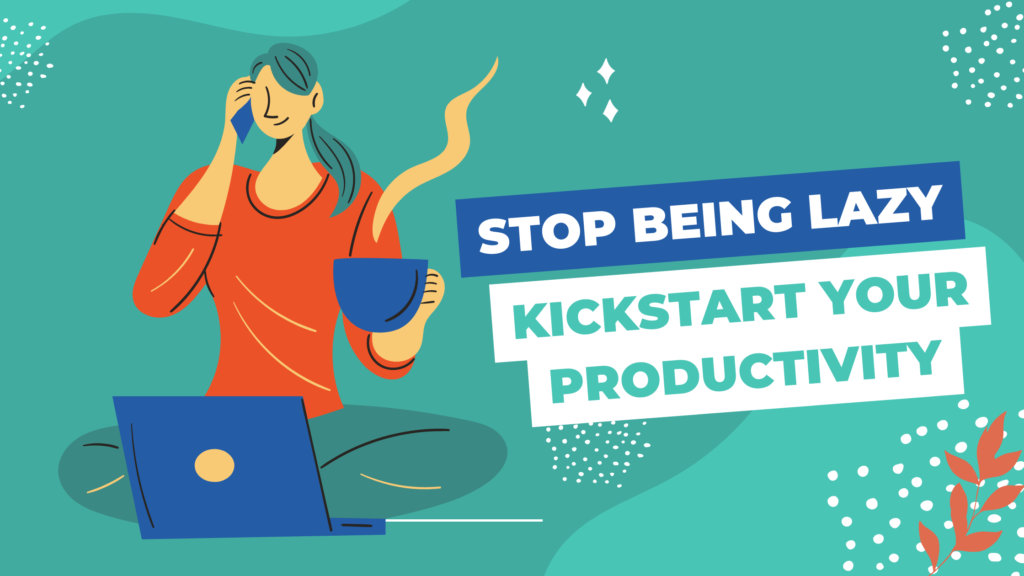Productive habits can significantly improve one’s productivity and success in both personal and professional life. Habits are powerful because they are automatic behaviors that can be developed with consistent practice over time. They can save mental energy and help us stay on track toward our goals. In this article, we will explore the importance of creating productive habits and how they can positively impact our lives.
The Importance of Creating Habits That Stick
Creating productive habits that stick is essential because it ensures that the benefits of these habits are sustained over time. A study by Phillippa Lally found that it takes an average of 66 days for a behavior to become automatic. Therefore, it is important to focus on developing habits that can be practiced consistently for at least 66 days to see lasting results.
Many successful people attribute their accomplishments to their productive habits. For instance, Warren Buffett, one of the most successful investors of all time, is known for his habit of reading up to 500 pages every day. This habit has helped him stay knowledgeable about the markets and make informed investment decisions. Similarly, former President Barack Obama is known for his habit of working out every morning, which helped him stay physically fit and mentally sharp during his presidency.

Understanding Habits: The Foundation of Productive Habits
Productive habits are key to maximizing your time and achieving your goals. To create productive habits, it’s important to first understand what habits are and how they work in the brain.
Definition of Habits
Habits are behaviors that are repeated regularly and tend to occur subconsciously. They are formed through a process called “chunking,” where a series of actions become a single, automatic routine.
How Habits Work in the Brain
Habits are created in the basal ganglia, a part of the brain that is responsible for motor control and procedural learning. The basal ganglia allows habits to become automatic by storing them in a separate part of the brain, freeing up mental energy for other tasks.
The Habit Loop: Cue, Routine, and Reward
Every habit consists of three parts: the cue, the routine, and the reward. The cue triggers the habit, the routine is the behavior itself, and the reward is the outcome that reinforces the behavior.
Breaking a Bad Habit
To break a bad habit, it’s important to identify the cue and the reward associated with the routine. For example, if you have a habit of snacking on junk food when you feel stressed, the cue may be feeling stressed, the routine is snacking on junk food, and the reward is feeling better temporarily.
To break this habit, you could change the routine or the reward. Instead of snacking on junk food, you could take a walk or do a quick workout to relieve stress. The reward of feeling better would still be present, but the routine would be different.
By understanding the habit loop and how habits work in the brain, you can begin to develop new, productive habits that will help you achieve your goals.
Identifying Productive Habits
Choosing the Right Habits
Choosing the right habits to cultivate is critical for creating lasting positive change in one’s life. Not all habits are created equal, and it’s important to choose the ones that align with your personal goals and values.
Examples of Productive Habits
Waking up early: Early risers tend to be more productive and focused, as they have more time to plan and organize their day. In fact, a study by the University of Texas found that students who identified as morning people had higher GPAs than their night owl counterparts.
Exercise: Regular physical activity has numerous benefits for both physical and mental health, including improved mood, increased energy levels, and reduced risk of chronic diseases.
Daily goal setting: Setting and achieving daily goals is an effective way to boost productivity and motivation, as it provides a sense of accomplishment and progress towards larger goals.
Choosing Habits that Align with Personal Goals and Values
When choosing productive habits, it’s essential to identify the ones that align with your personal goals and values. For example, if your goal is to improve your overall health and well-being, habits such as exercise, healthy eating, and meditation may be more beneficial than habits related to work or productivity.
Therefore, it’s important to take the time to reflect on your goals and values and choose habits that support them. This will increase your motivation and commitment to the habits, making them more likely to stick over the long term.
Identifying productive habits is a critical step toward creating lasting positive change in one’s life. By choosing habits that align with personal goals and values, individuals can increase their productivity, motivation, and overall well-being.
Strategies for Creating Productive Habits
Creating productive habits may seem daunting at first, but by breaking them down into manageable steps, it can be achieved with ease.
Breaking Down a Habit into Manageable Steps
One effective strategy for creating productive habits is to break them down into smaller steps. For instance, if you want to start waking up early, instead of aiming for a drastic change, start by waking up 15 minutes earlier each day. By doing so, you can gradually adjust to the new habit, making it easier to stick to it in the long run.
Setting Achievable Goals for Habit Formation
Setting achievable goals is another effective strategy for creating productive habits. By setting specific and measurable goals, you can track your progress and stay motivated. For example, if you want to create a habit of daily exercise, set a goal of working out for 30 minutes a day, three times a week, and gradually increase it from there.
Using Reminders to Reinforce Habits
Using reminders is also an effective strategy for creating productive habits. Setting alarms or placing visual cues, such as post-it notes, in your environment can serve as reminders to help you stay on track. For example, if you want to create a habit of drinking more water, place a water bottle on your desk as a visual cue to remind you to drink more water.
Example of Creating a Habit of Reading Every Day
Let’s say you want to create a habit of reading every day. By setting a goal of reading for 10 minutes before bed, you can gradually build up to reading for longer periods of time. Using a reminder, such as setting an alarm on your phone or placing a book on your nightstand, can reinforce the habit and make it easier to stick to in the long run.
Creating productive habits is essential for achieving success in all areas of life. By breaking down habits into manageable steps, setting achievable goals, and using reminders, anyone can create productive habits that stick.
Overcoming Obstacles and Sticking to Habits
Creating productive habits is not an easy task, and sticking to them is even harder. However, there are strategies to help overcome obstacles and stay on track.
Common obstacles to habit formation
- Lack of motivation: It can be challenging to stay motivated, especially when progress is slow.
- Lack of willpower: Willpower is a finite resource, and it can be depleted by other activities during the day.
- Lack of time: Busy schedules can make it difficult to find time for new habits.
How to overcome obstacles
- Find your “why”: Understanding why you want to create a habit can help keep you motivated.
- Make it a non-negotiable: Treating your habit as a non-negotiable part of your day can help prioritize it.
- Start small: Starting with small and manageable habits can help build momentum and motivation.
- Use visualization: Visualizing yourself successfully completing your habit can help increase motivation.
- Practice self-compassion: Being kind to yourself and acknowledging progress, no matter how small, can help build self-esteem and motivation.
The importance of tracking progress and rewarding oneself
- Habit tracking: Using a habit tracker app or journal can help track progress and identify areas for improvement.
- Celebrate small wins: Celebrating small wins can help build momentum and increase motivation.
Using a habit tracker app to track progress and stay accountable
- There are several habit tracker apps available, such as Habitica, Streaks, and Productive.
- These apps allow users to set goals, track progress, and receive reminders.
- Habit tracking can help identify patterns and areas for improvement, leading to more successful habit formation.
By understanding common obstacles and implementing strategies to overcome them, as well as tracking progress and celebrating small wins, individuals can successfully create and maintain productive habits.
Summing Up
In conclusion, creating productive habits is essential for improving productivity, efficiency, and overall success. By choosing the right habits, breaking them down into manageable steps, tracking progress, and staying accountable, one can create habits that stick and significantly improve their life. Starting to implement productive habits today can be the key to achieving one’s goals and fulfilling their potential.
FAQ
What are the most productive habits?
Some of the most productive habits include:
- Prioritizing tasks and setting goals
- Planning and organizing your day/week/month
- Focusing on one task at a time and avoiding distractions
- Taking breaks and practicing self-care
- Learning new skills and continuously improving
- Staying motivated and disciplined
What are examples of productive?
Examples of productive activities include:
- Completing tasks on your to-do list
- Learning a new skill or language
- Exercising and taking care of your physical health
- Networking and building relationships
- Reading and learning about new topics
- Volunteering and giving back to your community
- Creating something new, whether it be art, writing, or a business venture.
How do you make a productive habit?
To make a productive habit, you can try the following:
- Start small and be consistent
- Set clear goals and track your progress
- Create a routine or schedule that works for you
- Remove distractions and set up your environment for success
- Reward yourself for good habits and hold yourself accountable for bad ones
- Practice self-care and take breaks when needed.
What are the 6 characteristics of productive people?
The 6 characteristics of productive people are:
- Goal-oriented: Productive people have a clear vision of what they want to achieve and set goals to get there.
- Disciplined: They have the ability to stick to their goals and overcome distractions or setbacks.
- Organized: They have a plan in place for how to achieve their goals and manage their time effectively.
- Focused: They can concentrate on a task for extended periods of time, without getting sidetracked by other distractions.
- Self-motivated: They have an internal drive to succeed and are not reliant on external rewards or punishments.
Continuous learners: They are always looking for ways to improve their skills, knowledge, and productivity, whether it’s through reading, taking courses, or seeking feedback.




